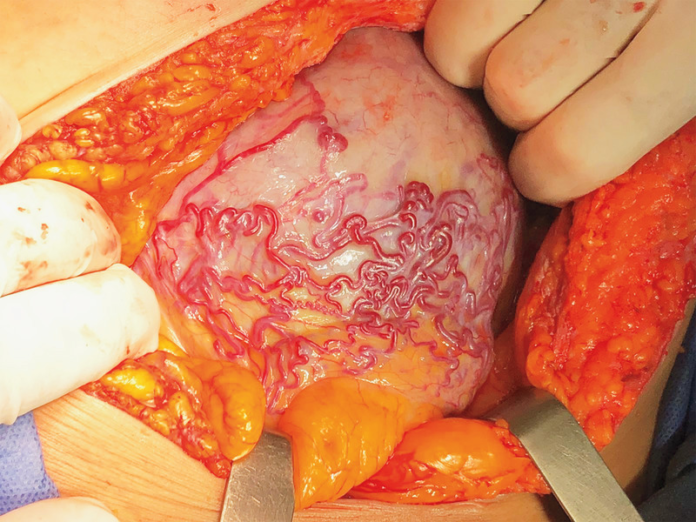26-year-old diagnosed with placenta increta during a caesarean section
This article describes the case of a 26-year-old woman who presented to the emergency department with painful uterine contractions at 32 weeks of gestation. This was the patient’s third pregnancy, she had two caesarean deliveries. The patient’s cervical examination was significant for a dilation of 3 cm with 40% effacement. Doctors referred the patient for a caesarean section because of a high risk of uterine rupture. During the procedure, multiple placental vessels were visible on the lower outer uterine wall. For this reason, the surgery had to be converted to a caesarean hysterectomy. And a healthy infant was developed.
Postpartum hemorrhage of 4000 ml complicated the surgery because of which the patient had to undergo transfusion as per an institutional protocol
There were no signs of bladder injury. Histological examination was consistent with the diagnosis of placenta increta.
Placenta increta is defined as the abnormal adherence of the placenta to the myometrium, the muscular outer layer of the uterus. It is also referred to as placenta accreta spectrum and is associated with partial or complete absence of decidua basalis, the part that participates in the formation of the placenta. Similarly, it can also be associated with incompletely or abnormally developed fibrinoid Nitabuch layer. It is often not diagnosed until the time of delivery, such as in this case. However, it is important for clinicians to identify the condition to avoid any serious complications, for example, postpartum hemorrhage. According to studies, the prevalence of this condition has significantly increases over the year and now occurs in 1 of 2500 pregnancies. Other risk factors include placenta previa, previous curettage, high gravidity, multiparity, advanced maternal age and uterine surgery.
The patient was discharged with her infant after 5 days of observation in the intensive care unit.
Source: NEJM




